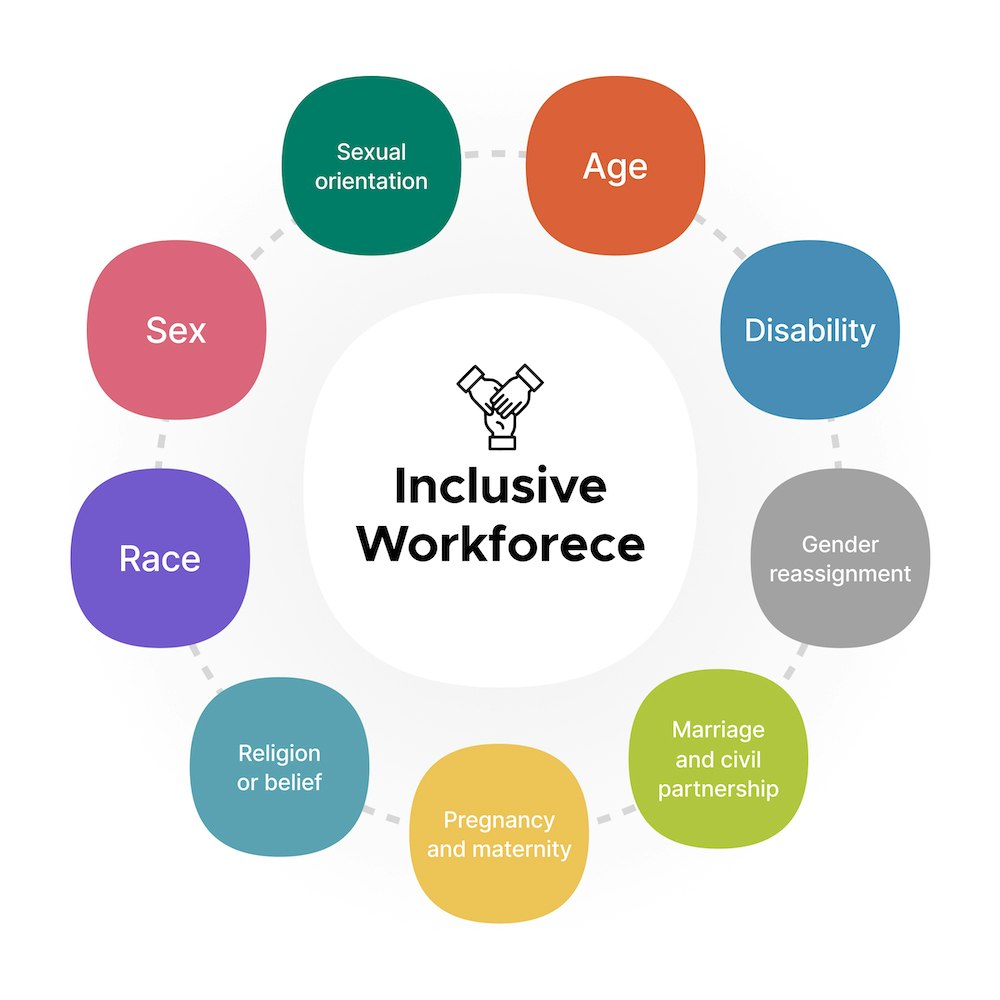- Company culture
Diversity in the workplace: a helpful guide

Go into your office and look around you: how diverse is your team?
We know that "diversity in the workplace" might sound like jargon, especially in today's world, where political correctness seems to have taken over every aspect of your life. However, more and more HRMs, HRDs, or company managers are becoming aware of the importance of diversity in the company.
Employing workers from a wider range of culturally diverse backgrounds, skills and experiences will enrich your company in ways you could never imagine. Ultimately, that means you'll be able to put out more and better products or services and, consequently, that your profits will go up.
What is diversity in the workplace?
In short, companies apply diversity in the workplace when they intentionally employ a wide range of diverse people in their workforce. It can be used as a tool to fight against all forms of discrimination based on the enhancement of differences as a performance lever.
The Equality Act of 2010
On October 1st of 2010, a new Equality Act came into force in the UK, which had the primary objective of protecting individuals from discrimination in the workplace, as well as in society.
The Equality Act of 2010 gathered a series of pre-existing anti-discrimination laws in one single act, making them easier to understand and apply in real-life situations. The act forced many businesses to start thinking about diversity in the workplace and equal pay.
This act protects people legally if they're ever faced with several types of discrimination:

These criteria can be applied at different stages of an employee's career in the company, from recruitment, training, promotion, dismissal, etc. The fight against discrimination and the implementation of diversity and inclusion programmes are also part of the HR manager's tasks.
In the case of discrimination, the victim can:
- Complain directly to the discriminating individual or organisation
- Use a mediator to help solve the situation
- Make a claim in court
What is the difference between diversity and inclusion?
The principles of diversity and inclusion are complementary. Diversity brings together the different profiles in a company, while inclusion ensures that these differences are respected and valued, generating a successful workgroup.
It is important to keep in mind that diversity in the workplace is not only about all the different team members having the same opportunities. Actively implementing it can become a competitive advantage that will allow you to beat your competitors and become a leader in your industry.
The benefits of diversity in the workplace
Diversity is a real source of wealth in a company, generating performance and better productivity at work. It brings benefits for both employers and employees. Here is a list of benefits of implementing a diversity policy in your company:
1. Increases creativity and innovation
Diversity in the workplace means you'll always have different points of view and richer problem-solving skills to use when facing a challenge or making a decision. That is a foolproof way to create more innovative concepts (83% more innovative, to be specific!).
2. Increases productivity and profits
If you give everyone an equal opportunity, your employees will feel accepted and see you as a fair company. Therefore, that will make them a lot more comfortable and willing to work hard every day.
A more productive team is able to understand your customers better and produce high-quality solutions, leading to a boost in your profits. For instance, a research conducted by McKinsey & Company in several different countries found that companies that value diversity in the workplace are also high financial performers.
3. Increases employee retention
Your employee turnover says a lot about your company, your company culture, and how you treat your employees. If it's too high, something needs to change, and perhaps what you need to do is work towards having a diverse workforce. When employees feel included and valued, they feel happier about their workplace and they'll want to remain your employee long term. According to Deloitte, organisations that are proactive in diversity and inclusion in the workplace have high retention rates.

4. Better hiring results
Hiring people with different backgrounds allows your company to get access to a big talent pool, increasing your chances to find the perfect fit for a certain open position. Moreover, having a diverse team will boost your employer's reputation and brand, which will be presented as being open to all.
5. Opens up new markets
Finally, diversity is imperative for any company wishing to expand internationally. It is not just a question of speaking a foreign language, but of understanding the culture of the country where you want to set up.

How to improve diversity in the workplace?
When trying to improve diversity in the workplace, many challenges can be faced such as internal resistance or difficulty to align diversity practices with unique organisational goals. Diversity is a must-have for an organisation and its importance has to be part of the mindset of the entire team.
Here are some actions that can be taken to overcome the diversity’s barriers.
- Conduct internal surveys to identify the gaps in your company’s diversity practices so you can focus on improving them
- Promote diversity in the recruitment and hiring process
- Organise workshops on diversity by involving employees of different ages, departments, gender, ethnic origin, etc.
- Organise team-building and festive events to create social links in your working environment
- Promote diversity and inclusive culture internally and externally (social networks, partners, newsletter)
- Set up inter-departmental visits to improve understanding of each other's roles
- Ensure equal opportunities (training, promotions, etc.)
Measure diversity in your company
kiwiHR is a simple and online HR software that puts people first. One of our most useful features for increasing diversity in the workplace is the reporting one. Through our HR analytics you can easily access data about your employees, such as their age and gender, and assess how diverse your team truly is.
Welcome to our mailing list! We hope you enjoy our content!


